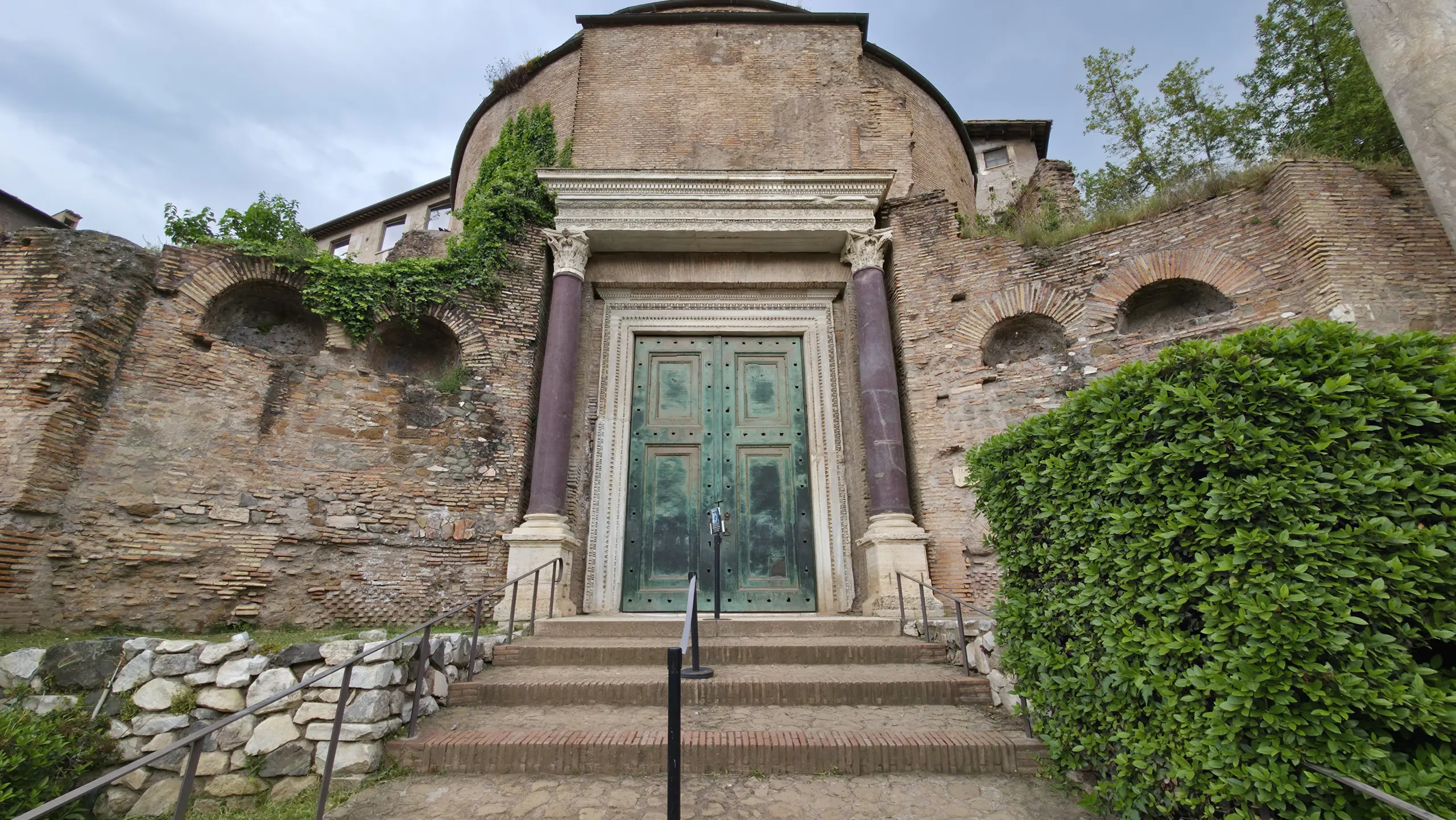Ciao, fellow travelers! ✨ Tucked along the Via Sacra within the Roman Forum lies a structure many tourists breeze past without knowing just how extraordinary it is. Welcome to the Temple of Romulus, now part of the Church of Santi Cosma e Damiano, a fascinating fusion of pagan legacy and Christian transformation. This site is a time capsule within a time capsule, radiating spiritual, historical, and architectural significance. Ready to step inside and uncover its secrets?
🏛️ A Temple with Two Stories
Let’s clear up the mystery first: Which Romulus was this temple dedicated to? Despite its name, this isn’t believed to be for the legendary founder of Rome, but rather Valerius Romulus, the deified son of Emperor Maxentius, who died young in the early 4th century. Maxentius likely commissioned the temple to honor his son’s memory and legacy, intertwining imperial power and divine tribute.
The structure stood out with its circular plan and magnificent bronze doors, which are remarkably still in place today, one of the few original Roman-era bronze doors that remain functional. The temple was constructed with precious materials and harmonious symmetry, symbolizing prestige, eternity, and the emperor’s grief. Archaeologists also believe the structure was meant to reflect cosmic harmony, mirroring celestial patterns, a popular motif in late Roman imperial design.
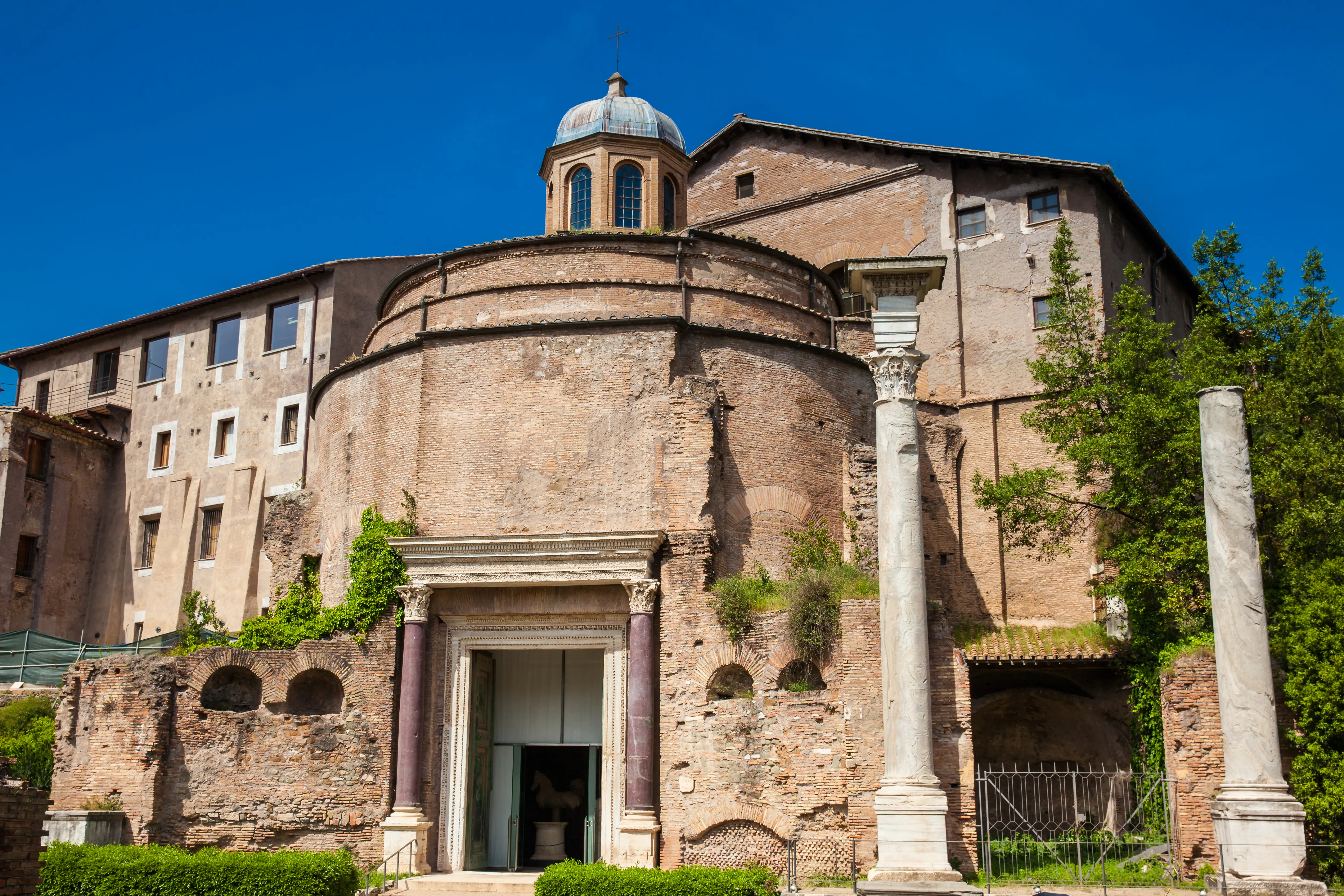
✝️ A Church Is Born
In the 6th century, Pope Felix IV transformed the Temple of Romulus into part of a new Christian basilica: Santi Cosma e Damiano, dedicated to the twin physician saints who were revered for their healing miracles. This wasn’t just an act of faith but also a strategic move to repurpose pagan sites and assert the Christian identity of Rome.
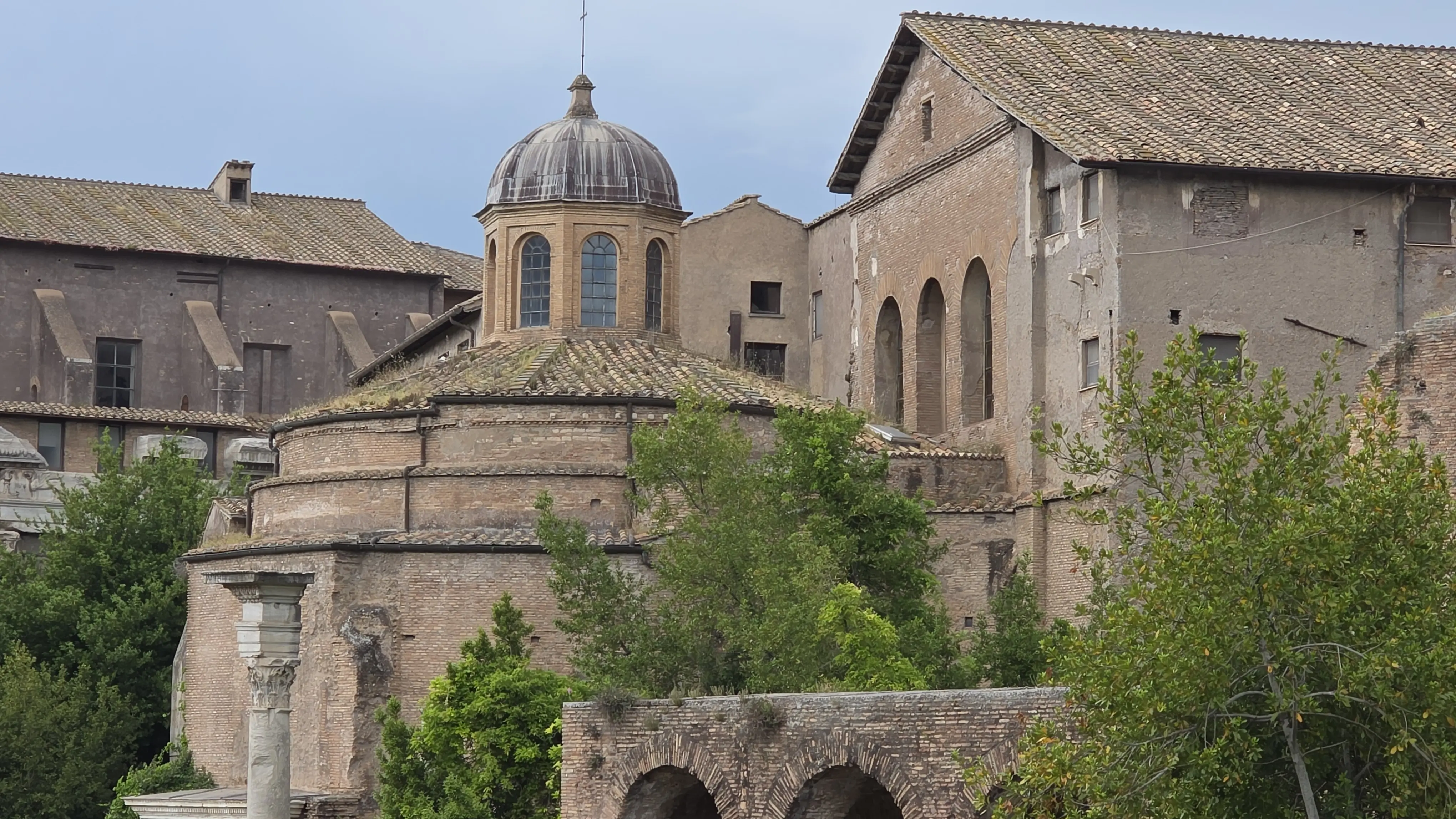
The circular temple became the vestibule for the larger church complex behind it. Step inside, and you’ll find awe-inspiring early Christian mosaics that shimmer in the apse, including a majestic depiction of Christ in glory flanked by Saints Cosmas and Damian, Peter, Paul, and Pope Felix himself holding the model of the church. The mosaics are among the finest examples of Byzantine influence in Rome, blending Eastern and Western iconography.
🚪 Those Famous Bronze Doors
One of the standout features of the Temple of Romulus is its original bronze doors, complete with ancient lock mechanisms that are still functional. These doors are a rare surviving piece of 4th-century Roman metalwork and are flanked by two deep purple porphyry columns, sourced from Egypt and reserved for imperial buildings. Standing before them feels like brushing against 1,700 years of continuous history. Their size, craftsmanship, and survival through centuries of turmoil are testaments to the Roman engineering genius.
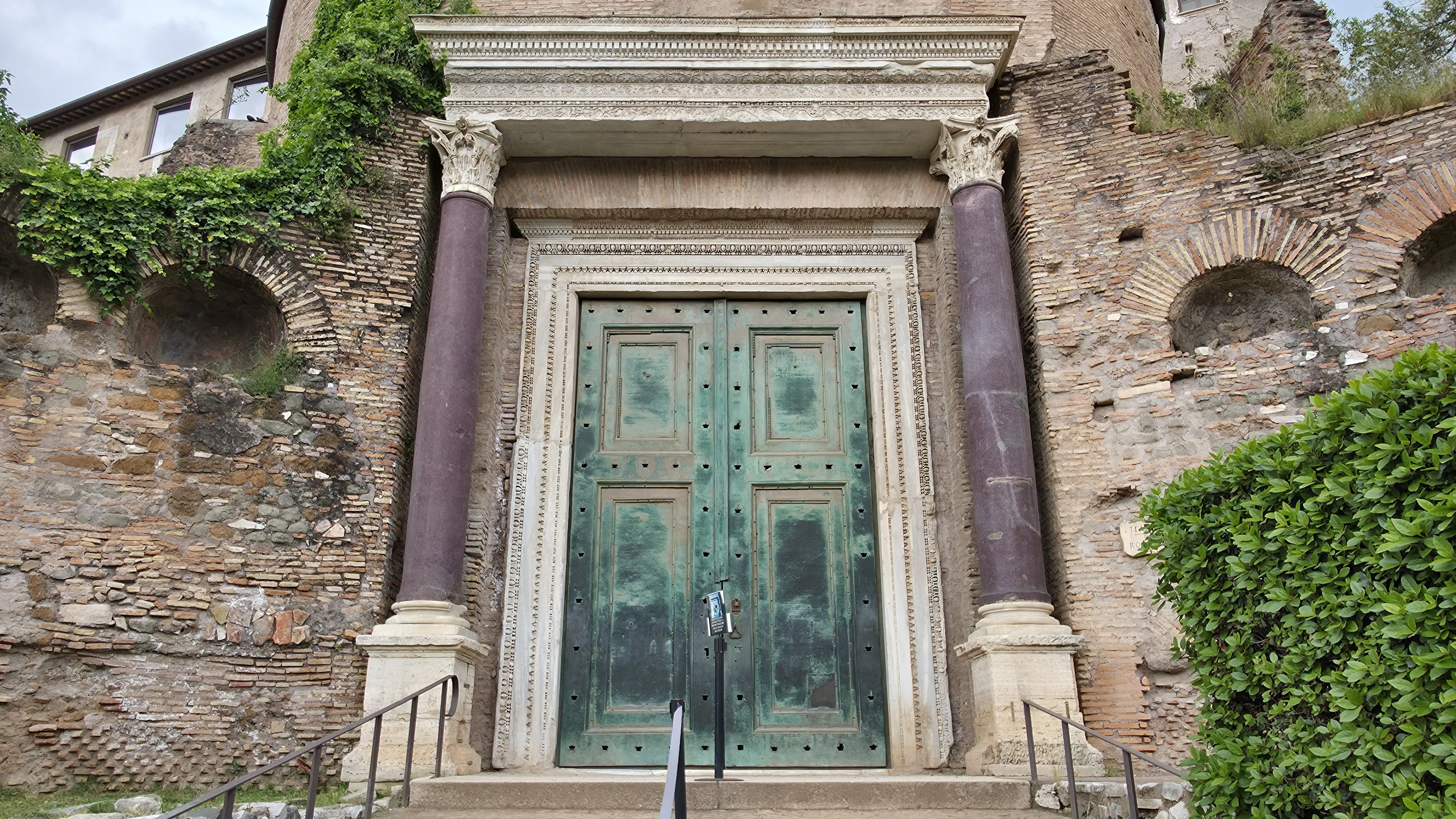
🔁 Pagan Past, Christian Present
This temple-turned-church exemplifies one of Rome’s most iconic traits: recycling its past. The structure isn’t just physically layered, it’s philosophically layered, too. Pagan architecture became Christian sanctity, and sacred space adapted rather than disappeared. The reuse of Roman temples as Christian churches wasn’t just practical; it was symbolic. By adapting imperial structures, the Church emphasized continuity and dominance, asserting that the divine could inhabit the same stones once devoted to emperors and gods. It’s a beautiful metaphor for Rome itself: always evolving, never erasing.
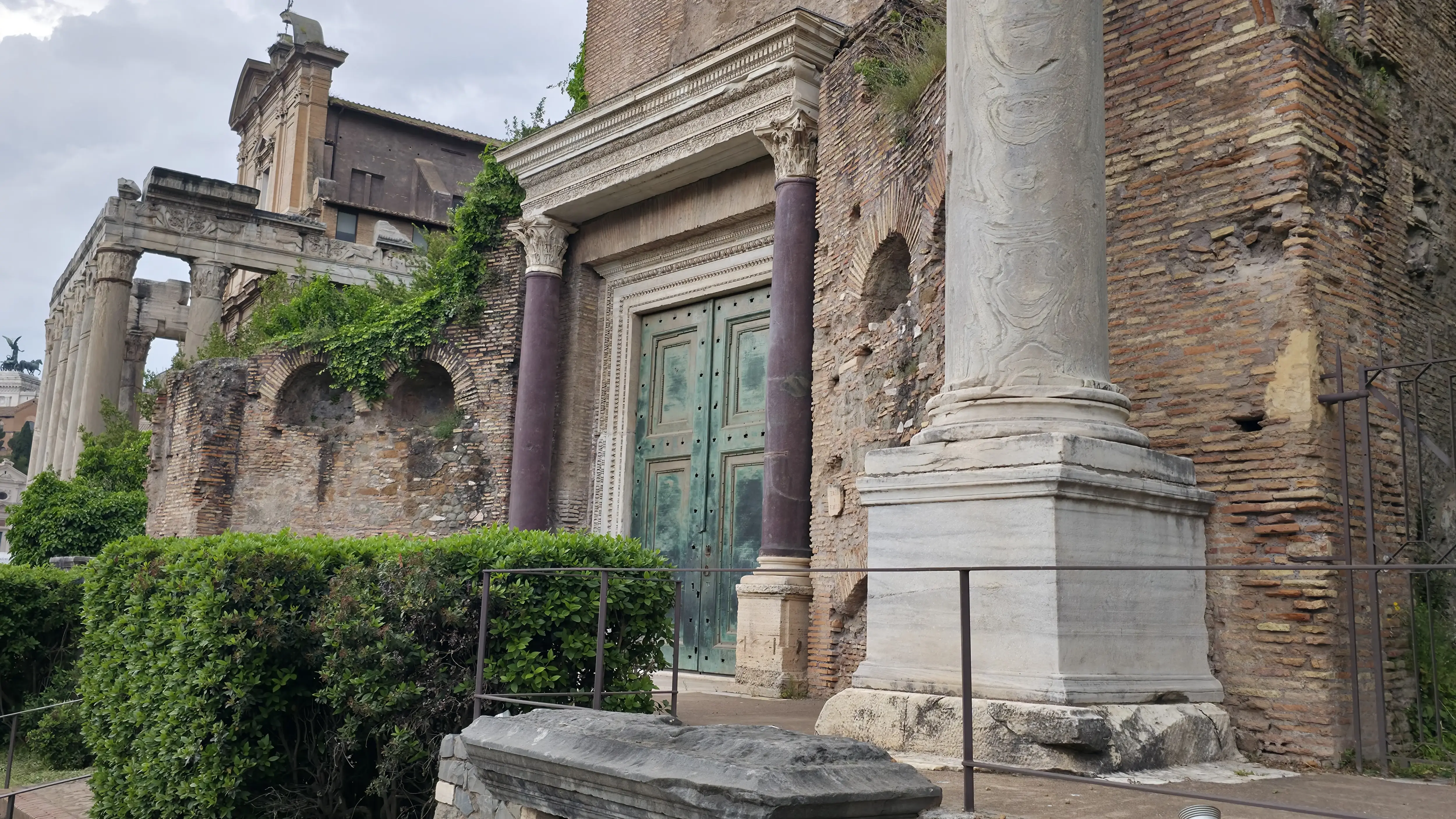
📸 Practical Tips for Visiting
- Location: Inside the Roman Forum, accessible via the Via Sacra entrance near the Colosseum or from the upper church entrance at Via dei Fori Imperiali.
- Opening Hours: Follows Roman Forum hours; typically from 9:00 a.m. to around 6:30 p.m. (last entry ~one hour before closing).
- Tickets: Included with standard Roman Forum/Palatine Hill/Colosseum ticket.
- Best Photo Angles: Capture the bronze doors from the Forum side, and the glittering mosaics from the upper church interior.
- Tip: For a quieter experience and access to the church interior, use the upper entrance on Via dei Fori Imperiali in the early morning.
- Bonus: Don’t miss the cloister garden at the back, serene and usually free of crowds!
Final Reflections
Rome is full of ruins that whisper. But here, you get something rarer: a space that still speaks. The Temple of Romulus, now the entryway to a Christian basilica, is more than a preserved ruin, it’s a bridge between belief systems, time periods, and meanings.
This is a place where memory becomes architecture, where the grief of a Roman emperor gave way to centuries of Christian worship, and where the harmony of form meets the beauty of spiritual transformation. It’s a striking example of how Rome reuses its past, not to bury it, but to elevate it.
If you’re wandering the Forum, don’t just walk past. Step through those magnificent bronze doors, because here, history isn’t frozen, it’s still unfolding, one visitor at a time.
xoxo,
Bubbly 💕

